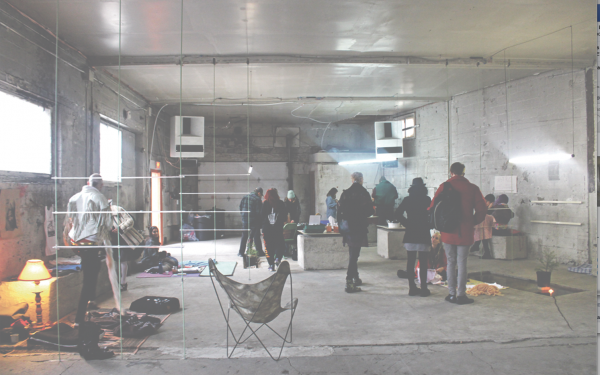Updating a Forgotten Play
Artists Breathe New Life into Witchcraft, the Last Witch Hanging in Britain
Witchcraft, a rarely produced 19th century Scottish play, has been revived by Concordia researchers and is being preformed as the sum of three years of work this week. Associate professor Louis Patrick Leroux and PhD student Cristina Iovita are overseeing a team of designers, multimedia technicians, and a cast of 23 actors.
The story takes place in the late 17th century just as Scotland is receiving the dubious honour of hosting the last witch hanging in Britain. Playwright Joanna Baillie used the event as inspiration for Witchcraft. Despite being well known in the 19th century, Baillie rarely saw her shows produced. Most of her plays were labelled “closet dramas,” which meant they were read in private rather than actually performed.
“She never sat through the play,” Leroux said, adding that the team working on Witchcraft needed to address some script issues that Baillie never got a chance to notice.
“We’ve cut it, rather extensively,” he said. “We’ve edited narrative bits, added visuals to help us navigate through this, but it remains a really good example of early 19th century theatre – with crazy things happening, too many people on stage, coup de théâtre – just all the exciting things you find in theatre.”
Leroux said that along with cutting scenes and lines, they also added dimensions through the use of multimedia, to clarify and expand themes in the play.
“We filmed a number of scenes that were absolutely needed for contemporary audiences to follow [the story],” Leroux explained. He added that Concordia’s Witchcraft production stays true to the play’s intricacies and gothic style despite these 21st century edgings.
As co-director, Leroux looked after the design and production aspects, while Iovita worked with the actors. He joked that “the director in theatre is usually a kind of tyrant.” With two directors on the same project, there was naturally some conflict. “It’s tricky,” he said. “But we managed.”
To direct the actors, Iovita drew on her experience with commedia dell’arte, a style of performance that works with gestures and strong characterization.
Although the large cast of second and third year theatre students only started rehearsing Witchcraft a month ago (on a rigorous six day schedule), the work of understanding and incorporating the era’s gestural codes – the way characters stand, interact, or move depending on their emotions – began a year ago.
This fully-realized production makes up just one part of the larger project Hypertext & Performance: A Resonant Response to Joanna Baillie’s Witchcraft by Concordia’s matralab and Hexagram Institute. The research project’s first year focused on dramatic responses to scenes from the play, the second year was the exploration of gestures from the era, and this the third year is the production.
But despite its high-art pedigree, the play is by no means an exclusive show for the theatrical elite. The research and multimedia elements are relied on just enough to properly tell the story.
“Basically all the research that came before is useful for us, and we won’t be flaunting it,” Leroux said.
There won’t be any more work done on Witchcraft by Concordia artists and researchers after the show closes on Sunday. And considering there was only one small London-based production in the past 100 years, Leroux guessed that, “it’ll probably be the last chance to see it in Montreal.”
Performed on SGW campus in the D.B. Clark Theatre, Leroux insisted that Witchcraft is an accessible theatre experience in every sense. Students looking to escape the stress of final exams can step into this gothic drama for both a cutting edge theatre experience and perspective on a bygone world.
Witchcraft / Nov. 30 – Dec 4 / D. B. Clarke Theatre (1455 de Maisonneuve Blvd. W.) / $10 regular, $5 students and seniors


_600_832_s.png)


_600_375_90_s_c1.jpg)

